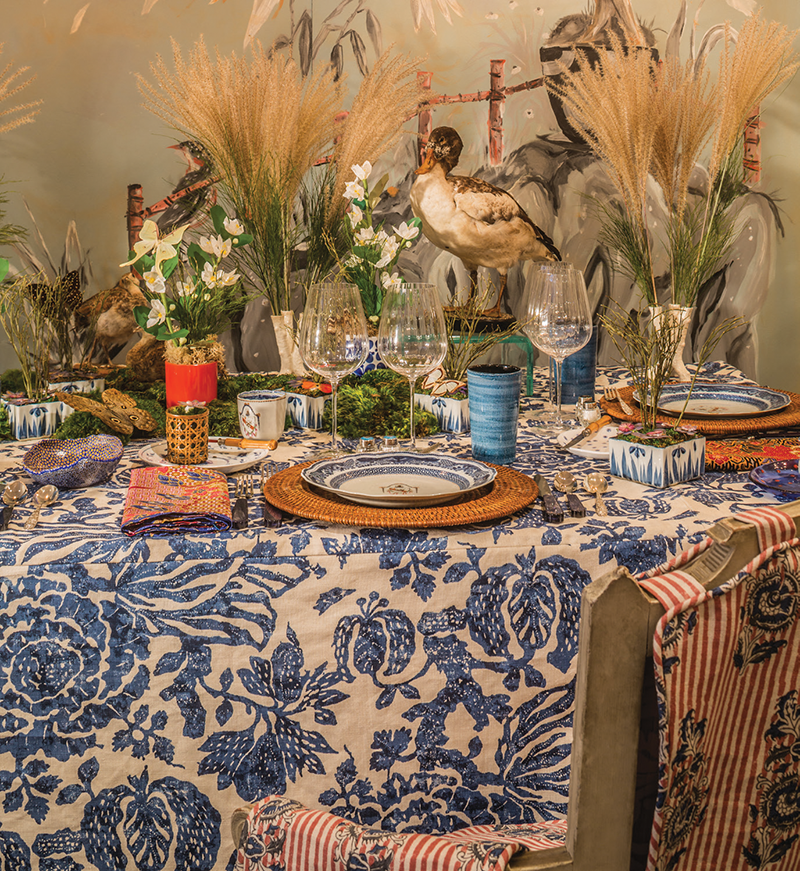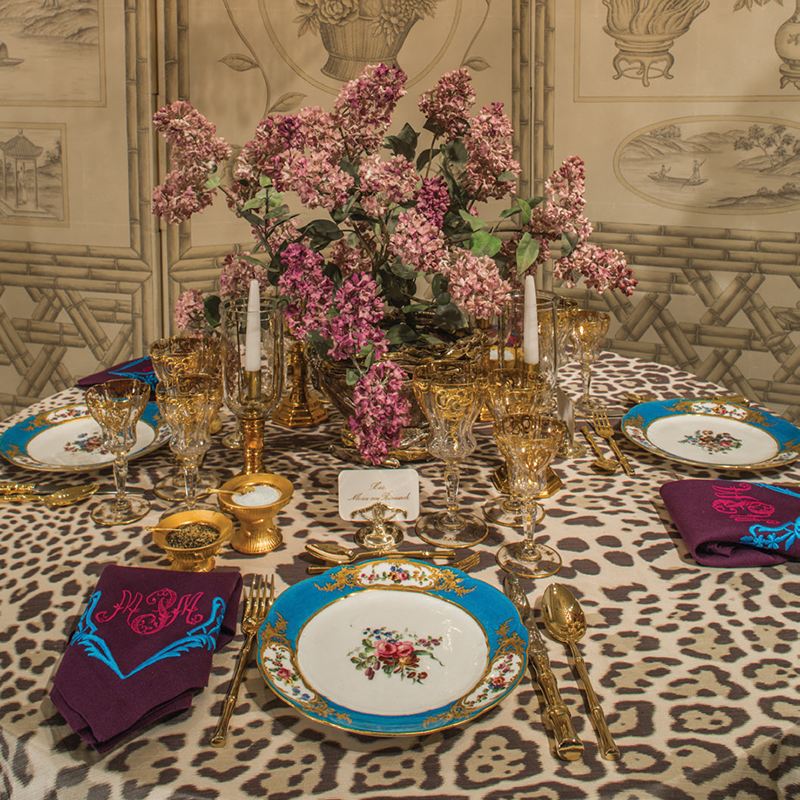
P. Gaye Tapp’s table. Photographs are by Erik Kvalsvik, courtesy of the Hillwood Estate, Museum and Gardens, Washington, DC.
It’s a lament familiar to many parents of a certain age: their children want “new,” “modern,” “minimalist”—not the more ornate objects of the past treasured by parents and grandparents. But The Artistic Table, an exhibition at Hillwood in Washington, DC, offers a compelling argument for thinking again before consigning those objects to the storage closet—or worse.
Hillwood curators asked several contemporary interior designers to take the legacy of the estate’s renowned hostess, Marjorie Merriweather Post, and use the extraordinary antique tablewares she collected to reinvent the meaning—and pleasure—of dining in style.
Heir to the Post cereal fortune, Marjorie Post was a serious collector of decorative arts, particularly from France and Russia, and she took minute care in using them when setting her table. Guests were treated to splendid “tablescapes” created with eighteenth-century French dinner services, German hammered-silver fruit compotes, antique silver or porcelain candelabras, imperial Russian services, lace runners, the finest of linens, and more.
“Marjorie Merriweather Post embraced the caring and feeding of friends as one of life’s pleasures and privileges and elevated setting the table to an art form,” says Charlotte Moss of New York, a Hillwood International Committee member and the first designer involved in the project. “After all…crafting a palette, selecting a theme, and combining disparate elements for the table is to create a collage that represents one’s personal style.”
North Carolina interior designer P. Gaye Tapp offers these tips: “Be inspired but don’t copy.” “Mix it up/Be bold.” “Be inspired by nature.” For instance, to translate Post’s formal Chinese export porcelain into modern use on her Hillwood table, Tapp writes: “I added Danish porcelain from the 1960s and small Japanese teacups, as well as modern murine glass from Italy. I paired it all with modern flatware from Sabre in Paris and heirloom Southern Rose silver—by Manchester—from my grandmother, as well as with practical wineglasses from Williams Sonoma. Like one of my favorite legendary hostesses, Baroness Pauline de Rothschild, I used natural elements—mosses, pampas grass, green living things (though mine here are preserved), placed in all manner of containers for the centerpiece. Finally, finding Carolina Irving’s Exotic Bloom fabric for the table solidified everything I wanted to do—her designs are rooted in Indian textiles but exude a freshness not easily found.”

Alex Papachristidis’s table.
Designers Hutton Wilkinson and Josh Hildreth, who joined forces for a table, took another innovative approach to the centerpiece, using a collection of antique frogs in glass, obsidian, bronze, and porcelain instead of flowers. Hildreth says, “I love to use antique objects in new ways, so French bronze and marble and mirror trays that lived on my grandmother’s dressing table became tea and serving trays on our table. Couture starfish once used on Valentino shoes were fashioned into napkin rings for heirloom damask napkins.”
In their own lives Wilkinson and Hildreth both use antique silver and porcelain on a regular basis. So does Los Angeles and Paris-based designer Timothy Corrigan, who says: “I feel passionate about the value of integrating antiques into even the most contemporary of homes…if only as an interesting accent piece as a conscious juxtaposition to sparkly clean yet spare newer pieces of furniture.” At Hillwood he demonstrated the idea by contrasting Post’s antique Tiffany candelabras with modern fabrics, wallpaper, and Limoges porcelain of his own design.
On view only until June 10, the show offers inspiration of all sorts for the reluctant dining table artist. (Virginian Barry Dixon lends intrigue to his table through the secret language of flowers and symbolic meanings of color.) One of the great surprises, though, says Angie Dodson, head of education at Hillwood, was Manhattan’s Alex Papachristidis’s “notion that his taupe-y leopard-print tablecloth might read as a ‘neutral’ backdrop that would allow the antique tablewares to shine. Darned, if he wasn’t right!”
